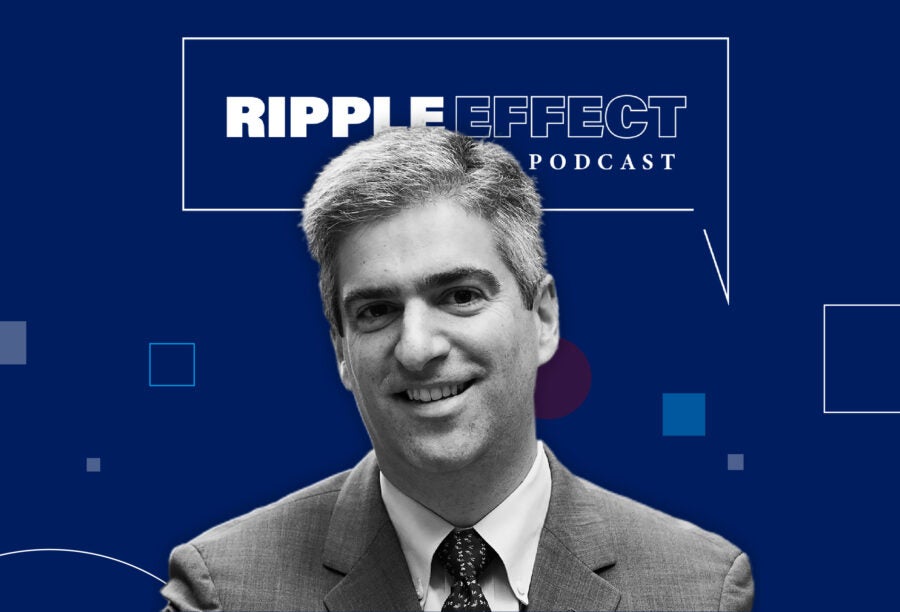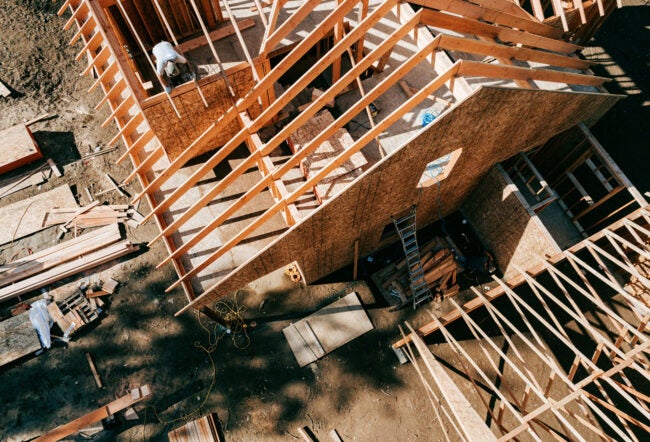Wharton’s Benjamin Keys explains the opposing market forces that are driving the difficult decision between buying and renting property. This episode is part of a series on “Real Estate.”
Transcript
The Housing Affordability Crisis Is Affecting People of All Generations
Dan Loney: There are a lot of questions around the real estate market right now, one of which is the decision to buy or rent. It's a pleasure to be joined here in-studio by Ben Keys, a Wharton real estate professor. Ben, it seems like it is becoming top of mind for a lot of consumers, trying to make that decision of which type of property they can afford right now.
Benjamin Keys: We're in the midst of an affordability crisis in the United States when it comes to home ownership. Between high interest rates and high house prices, it's a very challenging time to enter the housing market. I think we're seeing, especially from the millennial generation that is reaching those peak home-buying years, a feeling that they are priced out of a lot of the neighborhoods and even a lot of the cities that they'd like to be homeowners in. I think this is raising up to the level of one of the most important issues on people's minds -- the unaffordability of housing.
Loney: I think for a lot of people, when they're younger and they're thinking about where they want to live, they probably make the decision, "I'm going to rent first, so I can build up some equity and be ready to have the down payment." But with some of the dynamics of the economy right now, that's a challenge, especially when rents have risen the way they have the last few years.
Keys: Yes, that's right. If you think about the challenges that this generation has faced, at first it's the sort of uncertainty in the labor market coming out of the financial crisis. A lot of this generation was hitting the labor market in exactly those weak economic years. Those are difficult years to build up a down payment. They're also difficult years to have a job that has predictable income that's going to support making a long-term commitment to a mortgage.
It's only after you have had the chance to save up for a down payment, and then you also have that type of income stability, that you begin to have the confidence to become a homeowner. What we're seeing is a significant delay for this younger generation that, at the same point, previous generations had substantially higher homeownership rates.
Loney: There are significant components to buying property that are having an impact on the rental side, as well.
Keys: Yes, that's right. It mostly comes down to supply and demand, and what you have is a shift since the financial crisis. After this enormous wave of foreclosures, we had millions of foreclosures in the U.S., and we had a swing in terms of the availability of mortgage credit. Mortgage credit has become more difficult to access. Most homeowners need a very high credit score in order to obtain a mortgage. What that means is that there is a pool of people who historically may have been homeowners who are now pushed into the rental market, and that has driven up demand for rental units and has driven up the rents.
Loney: There's also the component of the baby boomer generation, when you think about the potential of renting. People who owned a home for 30 or 40 years who don't want to be in that property anymore. One of their best options is, "OK, I'm going to rent. I'm going to move into a city because that's where I want to be -- around all the excitement."
Keys: Yes, there are interesting demographic trends. I think the tensions in the housing and rental markets are where those demographic groups overlap -- where there is competing demand from multiple generations that might also want the same type of location, the same type of amenities. We're certainly seeing that trend, as well, of people moving out of their homes and into the cities as they reach those ages where they'd like to access some of those city amenities.
At the same time, there are still a lot of people who are looking to age in place, who like the sense of community that they've built up, maybe out in the suburbs, and are a bit reluctant to give that up. That comes back to not just the choice between owning and renting, but then where do you want to own, and where would you rather rent?
The Impact of Multifamily Construction
Loney: It's probably not a surprise that we've seen this unbelievable wave of multifamily properties that have been built over the last decade or two decades.
Keys: There’s been a big response in terms of multifamily construction, especially in the last just couple of years. This is coming out of this recognition of a growing demand for renters who can't access the mortgage market. And some of it is the demographics: the size of the millennial generation and the potential to create housing where the jobs are. I think this is one of the key tensions in the housing market and the market for rental units, as well. Are these units being built where the jobs are? And where do people want to locate? Some of that has been a reaction to some of the constraints that have been put in place, making it difficult to build in some of those areas.
Loney: If they're not building them where the jobs are, they're at least building them where there is access to get to those jobs. In the Philadelphia suburbs where I live, an apartment complex went up right next to the train station, so it's easy access for people to be able to get in and out of the city.
Keys: Yes, transit-oriented development has been a very popular buzzword for quite some time, but I do think you see a shift in reallocation, not just within cities and where development happens within those, but also across the country. We've seen much more construction happening in the Sun Belt and in places where it's easier to build. There is more space, potentially cheaper labor, less union barriers. The building tends to happen where it's easy to build, and sometimes you have the jobs actually moving there, rather than vice versa. When we think about the appeal of Austin, Texas, relative to the Bay Area, and why are tech companies relocating elsewhere? Some of that is related to housing costs.
Loney: I guess we shouldn't expect to see a slowdown on the multifamily side in the near future?
Keys: It's interesting that you say that. I think we are seeing a bit of a slowdown in multifamily over this last year. Some of that is that the high interest rates are really driving home just how difficult it is to build, so a lot of what we see is a lot of work in the multifamily pipeline. We see a lot of new construction that started a year ago or two years ago, when interest rates were low, and builders locked in those low rates. But now, coming through this kind of bulge in the multifamily pipeline, we are seeing a bit of a slowdown as the building shifts maybe a bit back towards single family. We also see just the impact of high rates on development.
Loney: Not that it's exactly the same, but it feels a little bit like what we've heard about over in China and Japan, in terms of the numbers of properties that are built in some of these big cities because that's seemingly the best option for a lot of people.
Keys: There are a few different nuances to that. One of the things that has distinguished Tokyo over the last few decades has been the relative affordability of rental housing. That has been really a function of how willing they have been to build, to redevelop even neighborhoods that have a ton of historical significance. Rather than preserving them in amber with preservation laws, they've recognized the need to build evermore upwards. That has actually kept housing costs down. We certainly don't have that ethos in this country of building to that level of density, and seeking to maintain housing affordability has not been a priority of policymakers.
I think this growing pressure from younger generations is going to get there eventually, but it might take some time. I think the parallels with China are a bit more of a stretch because that has been more of a credit bubble than anything else. There is very generous government support for construction, combined with encouraging people to invest heavily in real estate, so encouraging people to buy multiple properties as part of their portfolio in a country that saves a heck of a lot more of their money than we do in the U.S. We're a nation of spenders. They're a nation of savers, and a lot of that savings has been funneled into real estate development.
It really comes down to a policy choice about whether we want to encourage more development and bring affordability back into some sort of reasonable range, or whether we're going to continue to rely on some of these market forces that are pushing the jobs and pushing the development into parts of the country that have historically not had the same level of density.
Can Improved Real Estate Policy Solve the 'Rent or Buy' Crisis?
Loney: What is that policy discussion like right now here in the U.S.? I assume that probably a lot of it is happening either at the state or local level.
Keys: That's right. It's a complicated network of policy choices. So much of the decision about what gets built occurs at the very local level. In terms of the local zoning, what's the local review process? Does something have to go through a local city council person or some other type of regulatory review? A lot of these decisions are being made at a very local level.
Then you have state-level regulation that, in many cases, is trying to overturn some of that local resistance to more development. This is the NIMBY or the "not in my backyard" movement. We've seen states like California trying to push back very hard against that type of hyper-local control to block new development.
At the federal level, I think there is a variety of tools that the Biden White House has been putting forward as kind of a mix of carrots and sticks to try to encourage development along the lines that you were describing, with transit. You can tie the funding of new support for transit lines and for redeveloping public transportation and linking that to housing development or relaxing zoning rules. That's just one potential direction, but I think it is really a combined local, state, and federal effort that is going to be required for us to get from point A to point B.
Loney: Do you think that this run that we're in around housing -- buy versus rent -- is cyclical? Or is this more towards a permanent shift?
Keys: If we lay out a few of the elements that are determining where we are at the moment, one of those things is COVID. I think we have to recognize that interest rate environment during COVID was especially unusual. It was really a reflection of the incredible effort of both fiscal and monetary policy working hand-in-hand to avoid the worst possible outcomes.
One of the implications of that was driving mortgage interest rates to record lows. So, we have a large share of the mortgages in this country outstanding, that have interest rates below 4%. For households, that's an incredibly valuable asset, that they have a below-market price mortgage. To have a mortgage locked in below 4%, that means that every month you're effectively saving a substantial amount of money, and there is going to be a lot of resistance to giving that up.
What you have is a phenomenon known as "mortgage lock-in," where you have a lot of households that are quite content to sit in the homes where they're in. That freezes up the property ladder. It means that there is not a lot of inventory out there. It means that there are very few homes on the market, and that keeps prices very high. The drivers around that mortgage lock-in are going to persist for years. This is not a short-term problem. This is something where when people locked in a 30-year rate in 2021 or 2020, that can last for a very, very long time.
This is not something that's going to work its way through the system in the short run, and that means that we're going to need to look for other alternatives, in terms of driving down some of the affordability and incentivizing some of those people who are locked in to look elsewhere and to continue to move up the property ladder. Lubricating that property ladder is the thing that allows first-time homebuyers to get into those starter homes.



